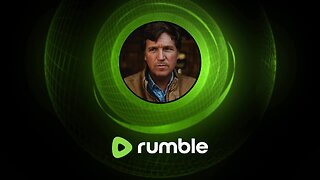Premium Only Content

NASA Animation Sizes Up the Biggest Black Holes
Editor's Note: A previous version of this video mislabeled the orbit of Saturn as the orbit of Jupiter. This new NASA animation highlights the "super" in supermassive black holes. These monsters lurk in the
centers of most big galaxies, including our own Milky
Way, and contain between 100,000 and tens of billions
of times more mass than our Sun.
Any light crossing the event horizon - the black hole' s point of no return - becomes trapped forever, and any light passing close to it is redirected by the black hole' s intense gravity. Together, these effects produce a shadow about twice the size of the black hole' s actual event horizon.
The animation shows 10 supersized black holes that occupy center stage in their host galaxies, including the Milky Way and M87, scaled by the sizes of their shadows. Starting near the Sun, the camera steadily pulls back to compare ever-larger black holes to different structures in our solar system. up is 1601+3113, a dwarf galaxy hosting a black hole packed with the mass of 100,000 Suns. The matter is so compressed that even the black hole's shadow is smaller than our Sun.
The black hole at the heart of our own galaxy, called Sagittarius A* (pronounced ay-star), boasts the weight of 4.3 million Suns based on long-term tracking of stars in orbit around it. It's shadow diameter spans about half that of Mercury's orbit in our solar system.
The animation shows two monster black holes in the galaxy known as NGC 7727. Located about 1,600 light-years apart, one weighs 6 million solar masses and the other more than 150 million Suns. Astronomers say the pair will merge within the next 250 million years.
At the animation's larger scale lies M87' s black hole, now with a updated mass of 5.4 billion Suns. Its shadow is so big that even a beam of light - traveling at 670 million mph (1 billion kph) - would take about two and a half days to cross it.
The movie ends with TON 618, one of a handful of extremely distant and massive black holes for which astronomers have direct measurements. This behemoth contains more than 60 billion solar masses, and it boasts a shadow so large that a beam of light would take weeks to traverse it.
-
 1:05:17
1:05:17
In The Litter Box w/ Jewels & Catturd
22 hours agoEPSTEIN: PHASE ONE | In the Litter Box w/ Jewels & Catturd – Ep. 752 – 2/28/2025
80.4K39 -
 1:49:10
1:49:10
The Quartering
5 hours agoTrump DESTROYS Zelensky To His Face, Trump Assassin Accomplice & Epstein File Debacle
107K69 -
 15:36
15:36
Tactical Advisor
6 hours agoMUST HAVE AR15 Upgrades for Under $100
75.8K4 -
 28:11
28:11
Rethinking the Dollar
7 hours agoTrump(verse): Trump Family Going All In On Crypto
3862 -
 21:49
21:49
Mrgunsngear
3 hours ago $0.40 earnedBarrett M107A1 .50 Cal Semi-Automatic Rifle Review
1.49K2 -
 1:14:18
1:14:18
Tucker Carlson
7 hours agoDr. Richard Bosshardt Reveals Deadly Truth: Most Surgeons Aren’t Fit to Practice. Here’s Why.
149K83 -
 3:48:32
3:48:32
Right Side Broadcasting Network
9 hours agoLIVE REPLAY: Pres. Trump and Ukrainian President Zelenskyy Meet and Hold a Press Briefing - 2/28/25
244K175 -
 2:59:13
2:59:13
The Charlie Kirk Show
6 hours agoTrump vs. Zelensky Reaction + The Epstein Misfire + Charlie vs. Newsom | Schimel, Marlow, Baller | 2.28
193K67 -
 55:05
55:05
The Dan Bongino Show
9 hours agoAmerica Is Back In The World Stage, And We Love To See It (Ep. 2433) - 02/28/2025
876K1.73K -
 49:29
49:29
The Rubin Report
8 hours agoDetails About Joy Reid’s Weeping Farewell No One Noticed with Co-Host Megyn Kelly
117K143